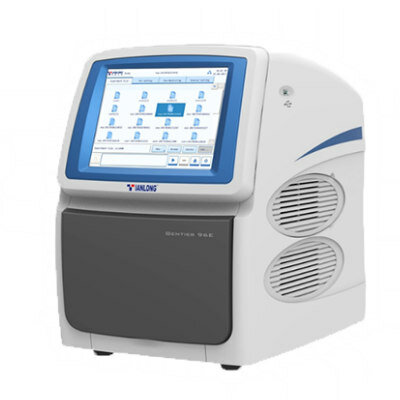Abnormal Liver Function Test Associated with Severe SARS-CoV-2 Infection
|
By LabMedica International staff writers Posted on 15 Feb 2021 |

Image: Liver function test abnormalities at hospital admission are associated with severe course of SARS-CoV-2 infection (Photo courtesy of Life Line Screening).
COVID-19 predominantly affects the pulmonary tract causing mainly respiratory symptoms, however, involvement of other organ systems has been described, including myocarditis, acute kidney injury, neurological abnormalities and acute liver injury.
During infection with SARS-CoV-2 liver injury occurs in a relevant proportion of patients. As yet, mainly elevation of aminotransferases has been described, while abnormalities of cholestatic parameters, that is, gamma-glutamyltransferase and alkaline phosphatase were reported less frequently. Liver function test (LFT) peak levels correlate with severity and/or outcome in COVID-19 patients.
Medical Scientists at the University Hospital Munich (Munich, Germany) analyzed liver function tests in a cohort of 217 patients (median age, 63 years) with SARS-CoV-2 infection and without pre-existing liver disease. Laboratory tests including liver enzymes were performed on admission and repeatedly until discharge. Values at admission as well as respective minimal and peak values were obtained via automated data extraction tools. LFT analysis included aspartate aminotransferase (AST), alanine aminotransferase (ALT), alkaline phosphatase (ALP), gamma-glutamyltransferase (GGT), total bilirubin (TBIL) and albumin. Further analyses included C-reactive protein (CRP) and interleukin 6 (IL-6). In case the patient had been transferred from another hospital, laboratory values from the initial admission were extracted from the patients’ files.
The investigators reported that abnormal LFT at hospital admission was present in 125 (58%) patients, with a predominant elevation AST; 42%, GGT; 37% and ALT; 27%, while hypoalbuminemia was observed in 33% of the patients. Of the 217 patients, 36% required treatment in the intensive care unit (ICU) and 32% underwent mechanical ventilation, with a total fatality rate of 14.7%, mostly related to COVID-19. Elevated levels of AST, ALT, GGT as well as hypoalbuminemia were also associated with an increased risk for ICU admission with odds ratio ranging from 2.06 to 13.95. On the other hand, hyperbilirubinemia, although rare at admission, was an independent risk factor for COVID-19-related death (OR, 4.80). The team noted that when hypoalbuminemia was combined with elevation of any LFT abnormality, the risk of ICU admission was markedly increased with the highest risk observed for the combination of hypoalbuminemia and AST (OR, 46.22).
The authors concluded that there was a significant correlation of elevation of baseline LFT, including GGT, as well as hypoalbuminemia with more severe courses of SARS-CoV-2 infections. Thus, baseline hypoalbuminemia when combined with other abnormal LFT in particular with abnormal AST or GGT should be regarded as a red flag indicating a more severe course of the disease and could support clinical decisions regarding closer monitoring and intensive care of patients with COVID-19. With a cut-off of 3.55 mg/dL, which is the lower limit of normal in their laboratory institute, albumin could differentiate between less and more severe cases with a sensitivity and specificity of 80%, respectively. The study was published on January 29, 2021 in the journal GUT.
Related Links:
University Hospital Munich
During infection with SARS-CoV-2 liver injury occurs in a relevant proportion of patients. As yet, mainly elevation of aminotransferases has been described, while abnormalities of cholestatic parameters, that is, gamma-glutamyltransferase and alkaline phosphatase were reported less frequently. Liver function test (LFT) peak levels correlate with severity and/or outcome in COVID-19 patients.
Medical Scientists at the University Hospital Munich (Munich, Germany) analyzed liver function tests in a cohort of 217 patients (median age, 63 years) with SARS-CoV-2 infection and without pre-existing liver disease. Laboratory tests including liver enzymes were performed on admission and repeatedly until discharge. Values at admission as well as respective minimal and peak values were obtained via automated data extraction tools. LFT analysis included aspartate aminotransferase (AST), alanine aminotransferase (ALT), alkaline phosphatase (ALP), gamma-glutamyltransferase (GGT), total bilirubin (TBIL) and albumin. Further analyses included C-reactive protein (CRP) and interleukin 6 (IL-6). In case the patient had been transferred from another hospital, laboratory values from the initial admission were extracted from the patients’ files.
The investigators reported that abnormal LFT at hospital admission was present in 125 (58%) patients, with a predominant elevation AST; 42%, GGT; 37% and ALT; 27%, while hypoalbuminemia was observed in 33% of the patients. Of the 217 patients, 36% required treatment in the intensive care unit (ICU) and 32% underwent mechanical ventilation, with a total fatality rate of 14.7%, mostly related to COVID-19. Elevated levels of AST, ALT, GGT as well as hypoalbuminemia were also associated with an increased risk for ICU admission with odds ratio ranging from 2.06 to 13.95. On the other hand, hyperbilirubinemia, although rare at admission, was an independent risk factor for COVID-19-related death (OR, 4.80). The team noted that when hypoalbuminemia was combined with elevation of any LFT abnormality, the risk of ICU admission was markedly increased with the highest risk observed for the combination of hypoalbuminemia and AST (OR, 46.22).
The authors concluded that there was a significant correlation of elevation of baseline LFT, including GGT, as well as hypoalbuminemia with more severe courses of SARS-CoV-2 infections. Thus, baseline hypoalbuminemia when combined with other abnormal LFT in particular with abnormal AST or GGT should be regarded as a red flag indicating a more severe course of the disease and could support clinical decisions regarding closer monitoring and intensive care of patients with COVID-19. With a cut-off of 3.55 mg/dL, which is the lower limit of normal in their laboratory institute, albumin could differentiate between less and more severe cases with a sensitivity and specificity of 80%, respectively. The study was published on January 29, 2021 in the journal GUT.
Related Links:
University Hospital Munich
Latest Clinical Chem. News
- 3D Printed Point-Of-Care Mass Spectrometer Outperforms State-Of-The-Art Models
- POC Biomedical Test Spins Water Droplet Using Sound Waves for Cancer Detection
- Highly Reliable Cell-Based Assay Enables Accurate Diagnosis of Endocrine Diseases
- New Blood Testing Method Detects Potent Opioids in Under Three Minutes
- Wireless Hepatitis B Test Kit Completes Screening and Data Collection in One Step
- Pain-Free, Low-Cost, Sensitive, Radiation-Free Device Detects Breast Cancer in Urine
- Spit Test Detects Breast Cancer in Five Seconds
- Electrochemical Sensors with Next-Generation Coating Advances Precision Diagnostics at POC
- First-Of-Its-Kind Handheld Device Accurately Detects Fentanyl in Urine within Seconds
- New Fluorescent Sensor Array Lights up Alzheimer’s-Related Proteins for Earlier Detection
- Automated Mass Spectrometry-Based Clinical Analyzer Could Transform Lab Testing
- Highly Sensitive pH Sensor to Aid Detection of Cancers and Vector-Borne Viruses
- Non-Invasive Sensor Monitors Changes in Saliva Compositions to Rapidly Diagnose Diabetes
- Breakthrough Immunoassays to Aid in Risk Assessment of Preeclampsia
- Urine Test for Monitoring Changes in Kidney Health Markers Can Predict New-Onset Heart Failure
- AACC Releases Comprehensive Diabetes Testing Guidelines
Channels
Molecular Diagnostics
view channel
Unique Autoantibody Signature to Help Diagnose Multiple Sclerosis Years before Symptom Onset
Autoimmune diseases such as multiple sclerosis (MS) are thought to occur partly due to unusual immune responses to common infections. Early MS symptoms, including dizziness, spasms, and fatigue, often... Read more
Blood Test Could Detect HPV-Associated Cancers 10 Years before Clinical Diagnosis
Human papilloma virus (HPV) is known to cause various cancers, including those of the genitals, anus, mouth, throat, and cervix. HPV-associated oropharyngeal cancer (HPV+OPSCC) is the most common HPV-associated... Read moreHematology
view channel
Next Generation Instrument Screens for Hemoglobin Disorders in Newborns
Hemoglobinopathies, the most widespread inherited conditions globally, affect about 7% of the population as carriers, with 2.7% of newborns being born with these conditions. The spectrum of clinical manifestations... Read more
First 4-in-1 Nucleic Acid Test for Arbovirus Screening to Reduce Risk of Transfusion-Transmitted Infections
Arboviruses represent an emerging global health threat, exacerbated by climate change and increased international travel that is facilitating their spread across new regions. Chikungunya, dengue, West... Read more
POC Finger-Prick Blood Test Determines Risk of Neutropenic Sepsis in Patients Undergoing Chemotherapy
Neutropenia, a decrease in neutrophils (a type of white blood cell crucial for fighting infections), is a frequent side effect of certain cancer treatments. This condition elevates the risk of infections,... Read more
First Affordable and Rapid Test for Beta Thalassemia Demonstrates 99% Diagnostic Accuracy
Hemoglobin disorders rank as some of the most prevalent monogenic diseases globally. Among various hemoglobin disorders, beta thalassemia, a hereditary blood disorder, affects about 1.5% of the world's... Read moreImmunology
view channel
Diagnostic Blood Test for Cellular Rejection after Organ Transplant Could Replace Surgical Biopsies
Transplanted organs constantly face the risk of being rejected by the recipient's immune system which differentiates self from non-self using T cells and B cells. T cells are commonly associated with acute... Read more
AI Tool Precisely Matches Cancer Drugs to Patients Using Information from Each Tumor Cell
Current strategies for matching cancer patients with specific treatments often depend on bulk sequencing of tumor DNA and RNA, which provides an average profile from all cells within a tumor sample.... Read more
Genetic Testing Combined With Personalized Drug Screening On Tumor Samples to Revolutionize Cancer Treatment
Cancer treatment typically adheres to a standard of care—established, statistically validated regimens that are effective for the majority of patients. However, the disease’s inherent variability means... Read moreMicrobiology
view channel
Mouth Bacteria Test Could Predict Colon Cancer Progression
Colon cancer, a relatively common but challenging disease to diagnose, requires confirmation through a colonoscopy or surgery. Recently, there has been a worrying increase in colon cancer rates among younger... Read more.jpg)
Unique Metabolic Signature Could Enable Sepsis Diagnosis within One Hour of Blood Collection
Sepsis is a life-threatening condition triggered by an extreme response of the body to an infection. It requires immediate medical intervention to prevent potential death or lasting damage.... Read morePathology
view channel
Spatial Tissue Analysis Identifies Patterns Associated With Ovarian Cancer Relapse
High-grade serous ovarian carcinoma is the most lethal type of ovarian cancer, and it poses significant detection challenges. Typically, patients initially respond to surgery and chemotherapy, but the... Read more.jpg)
Unique Hand-Warming Technology Supports High-Quality Fingertip Blood Sample Collection
Warming the hand is an effective way to facilitate blood collection from a fingertip, yet off-the-shelf solutions often do not fulfill laboratory requirements. Now, a unique hand-warming technology has... Read moreTechnology
view channel
New Diagnostic System Achieves PCR Testing Accuracy
While PCR tests are the gold standard of accuracy for virology testing, they come with limitations such as complexity, the need for skilled lab operators, and longer result times. They also require complex... Read more
DNA Biosensor Enables Early Diagnosis of Cervical Cancer
Molybdenum disulfide (MoS2), recognized for its potential to form two-dimensional nanosheets like graphene, is a material that's increasingly catching the eye of the scientific community.... Read more
Self-Heating Microfluidic Devices Can Detect Diseases in Tiny Blood or Fluid Samples
Microfluidics, which are miniature devices that control the flow of liquids and facilitate chemical reactions, play a key role in disease detection from small samples of blood or other fluids.... Read more
Breakthrough in Diagnostic Technology Could Make On-The-Spot Testing Widely Accessible
Home testing gained significant importance during the COVID-19 pandemic, yet the availability of rapid tests is limited, and most of them can only drive one liquid across the strip, leading to continued... Read moreIndustry
view channel
ECCMID Congress Name Changes to ESCMID Global
Over the last few years, the European Society of Clinical Microbiology and Infectious Diseases (ESCMID, Basel, Switzerland) has evolved remarkably. The society is now stronger and broader than ever before... Read more
Bosch and Randox Partner to Make Strategic Investment in Vivalytic Analysis Platform
Given the presence of so many diseases, determining whether a patient is presenting the symptoms of a simple cold, the flu, or something as severe as life-threatening meningitis is usually only possible... Read more
Siemens to Close Fast Track Diagnostics Business
Siemens Healthineers (Erlangen, Germany) has announced its intention to close its Fast Track Diagnostics unit, a small collection of polymerase chain reaction (PCR) testing products that is part of the... Read more
















